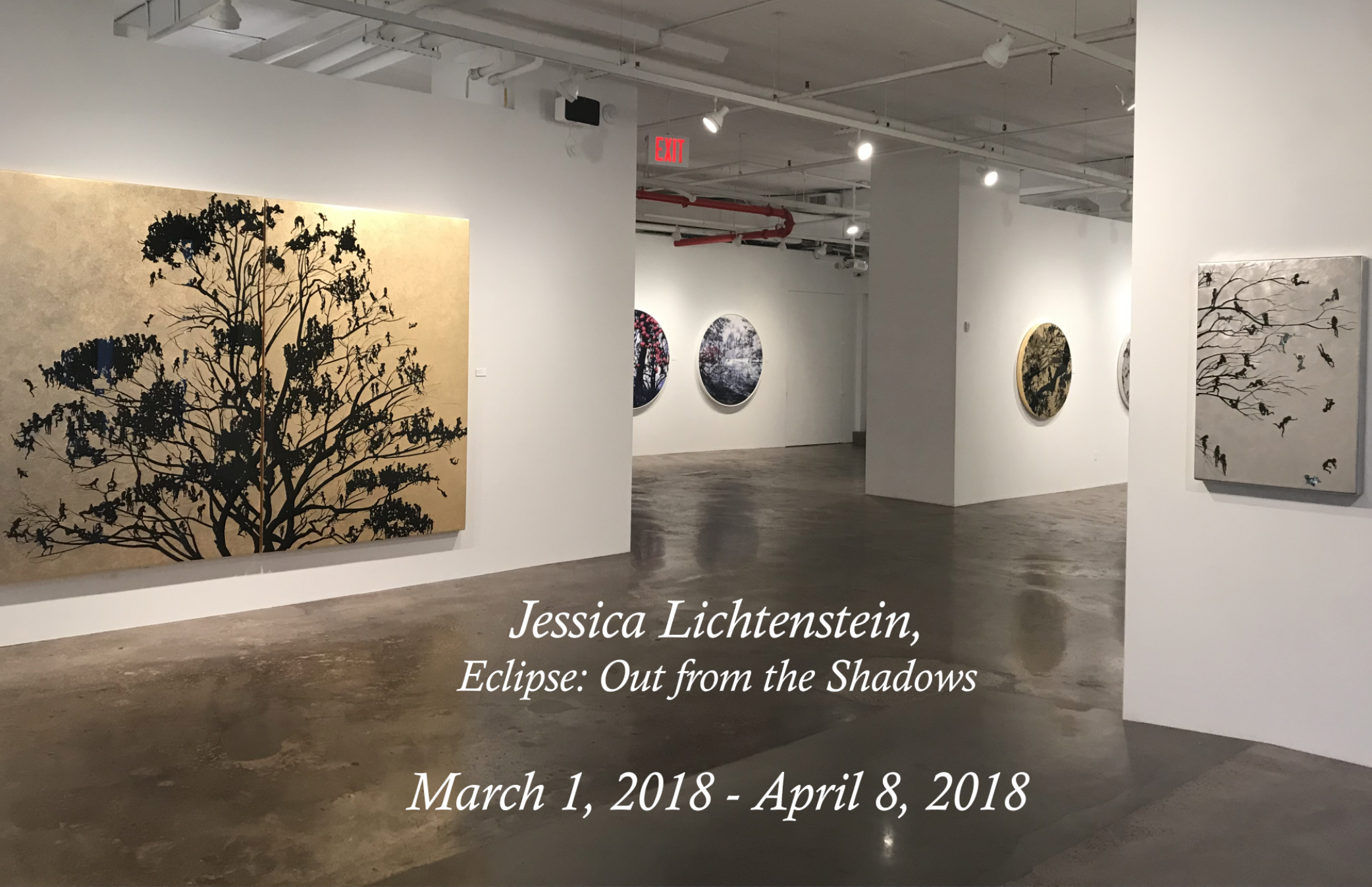“Eclipse: Out from the Shadows”
March 1-April 8, 2018
On August 21, 2017 people gravitated out of their homes, offices, schools and other humdrum daily routines to go outside and stare at the sky. It was a total solar eclipse, the first of its kind in 170 years, visible throughout the entire country. Strangers gathered on street corners, parking lots and grassy expanses to look -- through goggles, hopefully -- as the moon passed over the sun and, for a brief period, blocked it from view.
For artist Jessica Lichtenstein, the astronomical occurrence eerily mirrored what was going on here on earth. The moon -- traditionally represented as feminine in folklore and Romance languages -- was obstructing the (masculine) sun, simulating the women’s movements that burgeoned in the wake the 2016 election. Furthermore, the eclipse captured the attention of the entire nation, momentarily putting political divisions to rest. “It seemed like a changing tide, a rebirth of some kind,” Lichtenstein said.
Lichtenstein’s new series evolved from this realization. From a distance, her black, gold and pearl silhouettes resemble Japanese woodblock prints of blossoming Banzai trees. Look closer, however, and you’ll notice that each flower is a female body contorted into a unique position. The hyper-sexualized physiques are faceless, alluding to the male gaze’s tendency to reduce women to their bodily parts. But for Lichtenstein, these women are in the midst of a revolution. “These women are emerging from the shadows and revealing themselves, revealing their stories,” she said.
Lichtenstein’s landscapes teeming with women offer a vision of a fertile future, where women’s bodies form a lush army that is both sensual and strong. Their voluminous figures pay tribute to the female form’s extensive art historical precedent, as their teeming abundance hints at a highly anticipated uprising.






